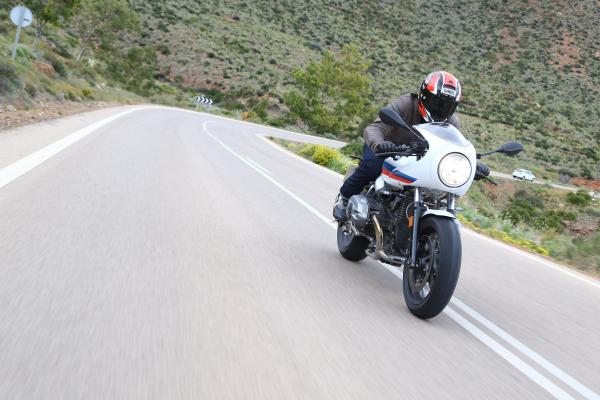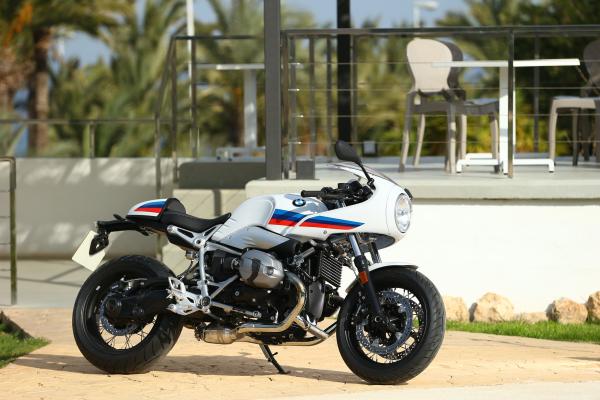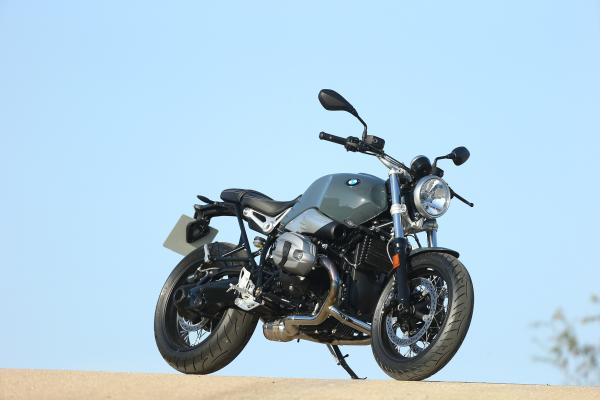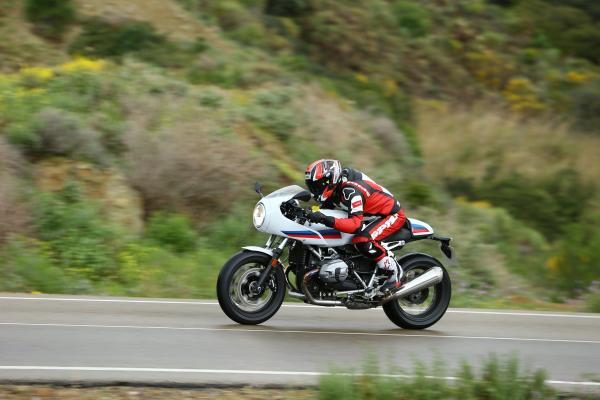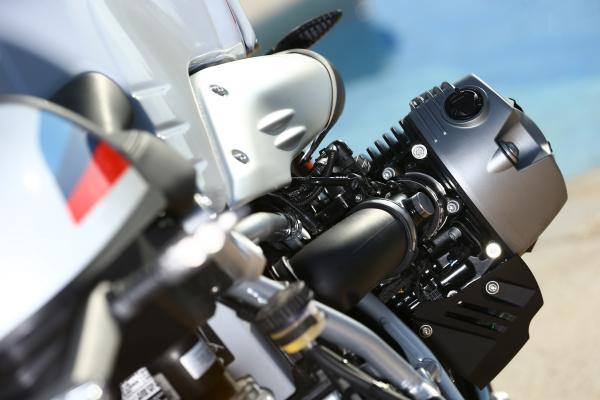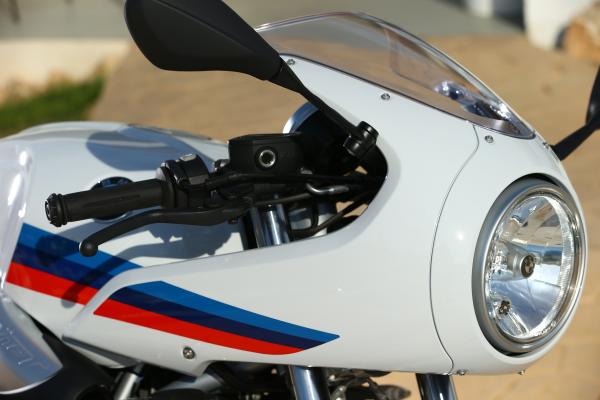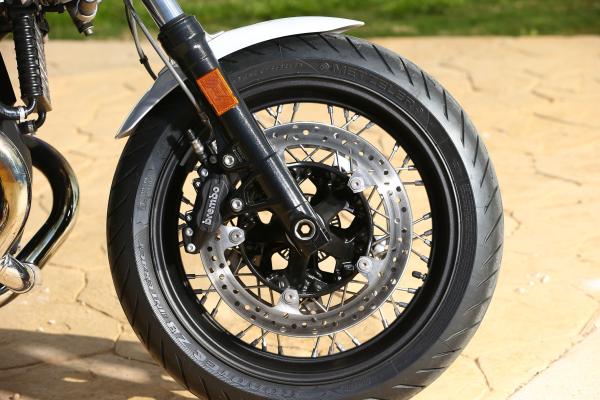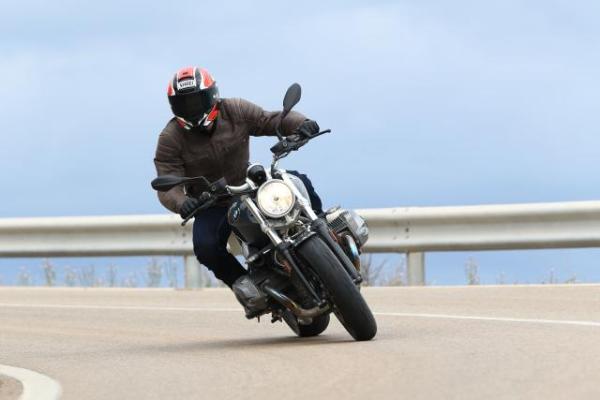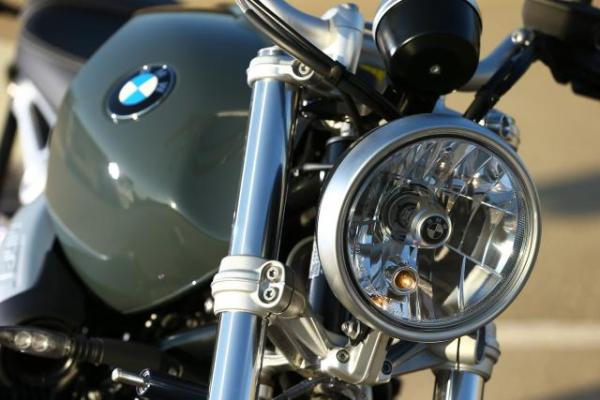First ride: BMW R nineT Racer and R nineT Pure review
BMW wants its new R nineTs to be customised up to the nines, but what are they like to begin with?

Member for
54 years 8 monthsBMW’S R nineT sold out when it first went on sale. No wonder – it’s more than just a handsome looking bike; it’s got the performance and engaging ride to back things up.
Now, with the addition of the R nineT Racer and R nineT Pure, BMW has expanded its heritage line to appeal to those who really want to customise their R nineTs.
The thinking behind this is simple: the R nineT is a premium bike and as such it comes with a premium price and some proper kit on it, like the forks and brakes from the S1000RR. If you’re the kind of person that wants to really start making it your own, you’re unlikely to want to start removing expensive parts and take an angle grinder to your standard R nineT.
The Racer and Pure share many of the same fundamental differences over the standard R nineT – they both use conventional forks and a pair of Brembo four-pot calipers instead of the USD forks and Brembo monoblocs on the standard R nineT.
Both bikes also use a modular frame, the same one used on the R nineT Scrambler. It’s made of three separate sections – the main frame, rear frame and pillion frame. The pillion frame can be easily removed to customise the rear of the bike, or fit a different seat.
Both model roll on 17 inch wheels at both ends (and not the 19 inch front wheel from the R nineT Scrambler). Spoked wheels come as standard, but you can spec cast if you want.
Aside from a larger catalytic converter and some changes to the mapping to make it Euro 4 compliant, the R nineT’s 110hp, 1170cc air-cooled boxer engine remains unchanged in both the Racer and Pure. Traction control is available as a £300 option.
The real differences between the Racer and Pure are the feeling they’re trying to deliver. The Racer, with its front half-fairing draws upon nostalgia for superbikes from the 1970s and 80s, while the Pure is a minimal version of the R nineT – ready for customisation.
We spent a day hopping between the new R nineT Racer and R nineT Pure (and the new S1000R, which you can read about here). More on the next page.
BMW R nineT Racer first ride review
Having ridden the standard R nineT, which shares the same riding position as the Pure, I decided to jump on the Racer first.
It was hard to resist; its retro superbike styling and simple three-colour BMW motorsport inspired graphics made the R nineT Racer an alluring prospect.
The styling evokes the not-too-distant past and for me, it all comes down to the domed front half-faring and the shape of the seat unit, which work to elongate the shape of the bike.
Once I’d fired the superb sounding boxer engine into life, climbed aboard and ventured out onto the roads near Mojacar in southern Spain, I immediately found myself in a stretched out and low position – the reach to the bars requires a decent reach over the tank and the rear sets are high and set back. It was definitely more extreme than I anticipated. It’s a ride position that’s spot-on for the feeling and type of bike the R nineT Racer is trying to evoke, but it’s not comfortable and after just 30 minutes I found myself shifting around to ease the pressure on my back, arms and wrists. But who said looking good was easy? I might be blowing my own trumpet here, but I felt like I looked good on the Racer and it was confirmed by a couple of glimpses at shop windows.
That’s not to say the R nineT Racer isn’t capable of holding your attention. It definitely is. The characterful engine provides lots of smoothly-delivered low down grunt and also really happy to rev up towards its 8,500rpm redline while you play out your favourite racing fantasy (made safer with ABS and optional traction control). The throttle is crisp, the gearbox slick, if not the lightest touch, and sound of the engine is all a deep rumbling boom that lingered in my mind for a while after I’d handed the keys back.
Crouching down and looking out beyond the bubble screen while pinning the throttle is a joy and te main instigator of my retro racing fantasies. OK, a glance down at the new twin-face analogue clocks and modern switchgear is enough to remind me that it’s 2017, and that I’m too young to have ridden this kind of bike first time round but that’s OK. What’s important is that the ride position and engine sound create exactly the ride experience you’d expect from looking at this bike.
Although it’s got Racer in its name, this is not the kind of machine you’ll want to flog the life out of. Like the R nineT, the Racer handles predictably and although it’s perfectly responsive to steering inputs, it doesn’t turn particularly quickly. It’s certainly at its best when progressing along a flowing road with swooping corners. Where the R nineT and Pure are king in town, at low speed, the Racer can feel cumbersome. I put that down to the ride position, which made the Racer’s 220kg weight feel greater; it was certainly at the forefront of my mind when doing U turns during the photo sessions, where I was conscious of overbalancing it and ending upon the floor.
Although the R nineT’s USD forks have been removed in favour of less expensive, traditional items, the front end didn’t feel like it had been robbed. Although the Racer’s right-way-up forks don’t offer quite the same level of refinement as the R nineT’s, the front end gave me predictable and comfortable performance and a nice front end feel. They certainly aren’t bouncy or harsh and if you’re put off by the lesser spec forks, remember that this bike costs £1,125 less, and would look wrong with the R nineT’s gold upside down forks. Anyway, unless you’re really giving it death on the road – you probably won’t be longing for the R nineT’s S1000RR-derived forks.
It’s the same with the Brembo brakes – they’re adequate and look the part, but don’t offer the same sharp stopping power as the more modern monoblocs on the standard R nineT.
The R nineT Racer is a gorgeous and indulgent motorcycle. It’s a superb looking, ready-made café racer that delivers an evocative, personality-rich and nostalgic ride experience, but I wouldn’t want to spent all day on one.
Tested: BMW R nineT Racer
Price: from £10,775
Engine: 1170cc oil/air-cooled twin-cylinder boxer, DOHC, four-valves per head
Power: 111.5hp at 7,750rpm
Torque: 85.55lb/ft at 6,000rpm
Chassis: Three-section frame
Suspension: Front - Non-adjustable 43mm RWU forks / Rear – Paralever monoshock with adjustable preload and rebound damping
Brakes: Front – Twin four-piston Brembo calipers with 300mm discs / Rear – Two-piston caliper with 265mm disc
Fuel capacity: 17 litres
Seat height: 805mm
Weight: 220kg fully fuelled and ready to ride
Availability: Now
BMW R nineT Pure first ride review
AS YOU MIGHT expect, the R nineT Pure delivers the same performance as the R nineT Racer – but the way it does it is totally different.
The engine is still gloriously smooth and torquey but with the Pure’s upright riding position and lack of wind protection, it’s fun to blat around on the torque. I found myself keeping the bike between 4,000 and 8,000rpm and looking for any excuse to hear the crisp bark from the motor whenever I blipped the throttle.
It shares the same ergonomics as the R nineT and compared to the Racer, it’s a comfier, more manageable prospect. While it doesn’t encourage the same chin-on-tank riding I slipped into on the Racer, the Pure is as playful and fun as the standard R nineT and that’s a great thing.
Because the riding position is the same as the R nineT’s – it’s one that put me firmly in charge and makes it easy to hustle the Pure around. It’s also much better than the Racer at low speed – those wide, well positioned bars and the natural position the Pure puts you in means you’re firmly in command and slow speed filtering and U turns easy aren’t hampered by the ergonomics.
As with the Racer, the Pure’s suspension quietly gets on with providing a consistent connection to the road and the brakes, though not as powerful as the standard R nineT’s, are enough for the Pure.
True to its name, the R nineT is a pure and fun bike to ride. It’s game for being slung around a curving Spanish road and happy at picking through slow stuff. It’s still one stylish mofo and ripe for owners to get busy in the garage with.
Tested: BMW R nineT Pure
Price: £9,990
Engine: 1170cc oil/air-cooled twin-cylinder boxer, DOHC, four-valves per head
Power: 111.5hp at 7,750rpm
Torque: 85.55lb/ft at 6,000rpm
Chassis: Three-section frame
Suspension: Front - Non-adjustable 43mm RWU forks / Rear – Paralever monoshock with adjustable preload and rebound damping
Brakes: Front – Twin four-piston Brembo calipers with 300mm discs / Rear – Two-piston floating caliper with 265mm disc
Fuel capacity: 17 litres
Seat height: 805mm
Weight: 219kg fully fuelled and ready to ride
Availability: Now
